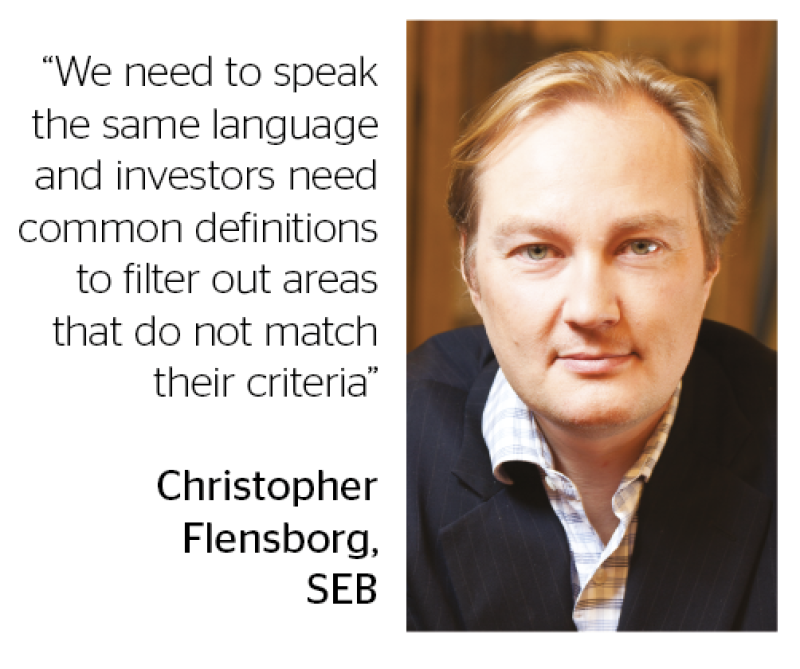The African Development Bank, European Investment Bank, International Finance Corp and World Bank originally distributed the Harmonised Framework for Impact Reporting in green bondsto investors in March 2015. But its public version only emerged last year after seven more SSAs had joined the initiative in September.
The market response was supportive. “Harmonisation is a game-changer,” argues Christopher Flensborg, head of climate and sustainable financial solutions at SEB in Stockholm. “We need to speak the same language and investors need common definitions to filter out areas that do not match their criteria. That way, investors and borrowers can find each other.”
Demanding benchmark
Even so, one of the first green bond issuers to provide impact reporting, Germany’s KfW (one of the framework’s signatories) acknowledges scepticism over the project’s scale.
“There was some criticism that this was too high a benchmark for other issuers,” recalls Doris Kramer, vice-president, investment strategies, sustainability, KfW Frankfurt. “However, we said that we wanted to do more than normal. And time has shown that overall the quality of reporting is getting better.”

Alignment between the framework and the Green Bond Principles was evident in issuers’ first impact reports following the revisions. “They were completely adjusted to the revised framework,” notes Kramer.
It is unclear if sovereigns, banks and corporates will take up the framework, though its guiding lights hope to see broader participation.
“It would be nice if we could have standardised reporting. We would really support that,” comments Lars Eibeholm, head of treasury at the Nordic Investment Bank (another signatory) in Helsinki.
But other issuers are hesitant.
“I like the idea since it allows benchmarking and makes it easier to read across reports,” says Cefas van den Tol, global head of corporate DCM at ING Bank in Amsterdam. “But will it limit potential growth? The green bond market is… young and vulnerable.”
Potential European corporate issuers have expressed doubts over the framework, worried that investors — especially ‘light green’ buyers — may not value their sustainability.
Although bank issuers will struggle to equal SSAs’ level of impact reporting without incurring substantial cost, they could offer alternatives such as indices, filters and lists.
Some players question how many issuers could satisfy the most stringent, ‘dark green’ version of the product aligned with the framework. They may be insufficient for the volume of climate change mitigation financing needed around the world, they fear.
“I can definitely see a place for a very robust green bond market with very stringent eligibility criteria and reporting requirements,” says Stephanie Sfakianos, head of sustainable capital markets at BNP Paribas in London. “But there is room too for a broader market in parallel that is less robust but where issuers are working hard to make their processes transparent.”
While investors must determine their own thresholds for the product, NIB “would like to maintain integrity around green bonds. If we dilute the concept too much, everything falls apart”, cautions Eibeholm.
Impact themes
The framework would be more useful if it emphasised impact themes, some argue. Hans Biemans, head of sustainability, markets at Rabobank in Utrecht, believes that harmonised themes are important, as they allow bonds to be classified into “theme boxes”. But most investors are at an earlier phase, he judges. “The capacity of institutional investors is not at that point yet and most asset owners do not require such analysis from their managers. But we do absolutely need frontrunners to demonstrate how impact reporting is done.”
Conversely, advanced investors want the framework to go further — into areas such as water sustainability, waste management and biodiversity, says Christopher Wigley, senior portfolio manager, credit at Mirova in London. Or they could be applied to allied products and asset classes — like direct infrastructure, suggests Ashley Schulten, head of climate solutions, fixed income at BlackRock in New York.
Projects & portfolios
The 11 framework signatories are not unanimous on every point. For the supras who originated the framework project-level reporting is natural, if not required. But for lenders such as KfW, with its thousands of loans a year to small and medium-sized renewable energy projects, portfolio-level reporting is appropriate.
Moreover, if the green asset-backed securities (ABS) envisaged in the Principles are to find traction, project level reporting will be unfeasible. And issuers can commission independent assessments of their portfolios. KfW uses the ZSW institute, for example.
